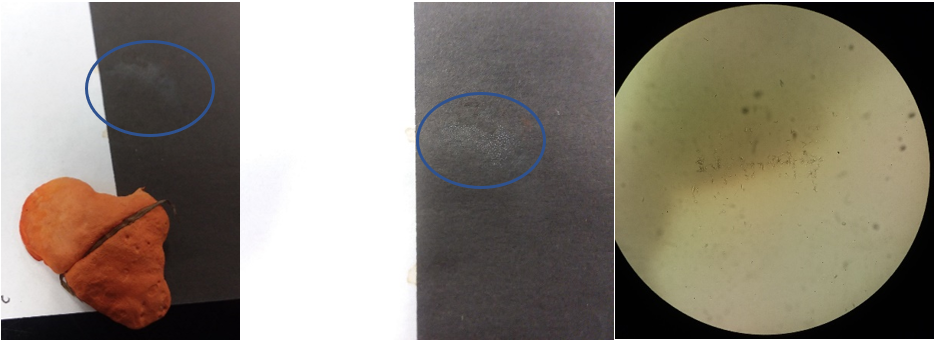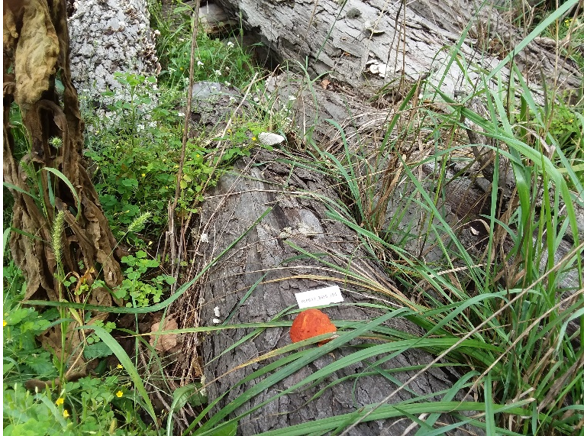Pycnoporus cinnabarinus
Pycnoporus cinnebarinus (Jacquin) Karsten (Basidiomycota, Polyporaceae) is very widespread in North America and most commonly found on dead hardwoods.

Pycnoporus cinnabarinus (Jacquin) Karsten
Taxonomy:
- Kingdom: Fungi
- Division: Basidiomycota
- Class: Agaricomycetes
- Order: Polyporales
- Family: Polyporaceae
- Genus: Pycnoporus
- Species: P. cinnabarinus
Pycnoporus cinnebarinus (Jacquin) Karsten (Basidiomycota, Polyporaceae) is very widespread in North America and most commonly found on dead hardwoods. This fungus us a saprotroph and will cause a nice white rot on the dead trees which cross paths with it (figure 3).
Pycnoporus cinnebarinus is a bright orange fungus with an even brighter orange/red pore surface (figure 1). The undersurface of this fungus is covered with very minute pores which produce ellipsoidal shaped spores (figure 2). and which produce a white spore print (figure 2).

This fungus does not possess a stipe of any sort to speak of, but instead the cap simply grows out of the side of a downed tree trunk. The cap will react to KOH and change to a deep purple color, turning to a more grayish hue as time passes (figure 1).

References:
- Kuo, M., & Methven, A. S. (2014). Mushrooms of the Midwest. University of Illinois Press.
- Kuo, M. (2010, February). Pycnoporus cinnabarinus. Retrieved from the MushroomExpert.Com.
- MycoBank Pyncoporus cinnebarinus, Web. 7, November, 2018.



 Print
Print Email
Email



